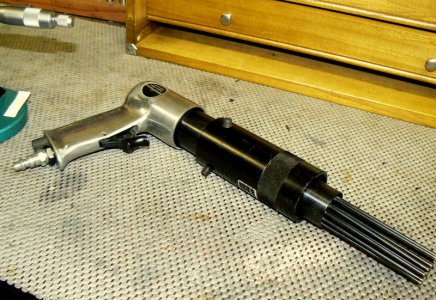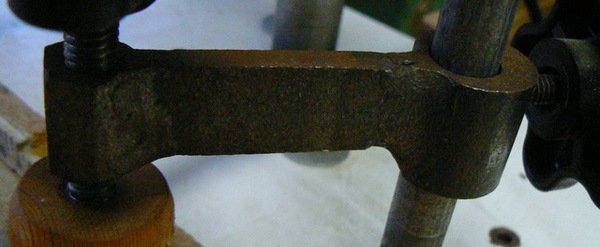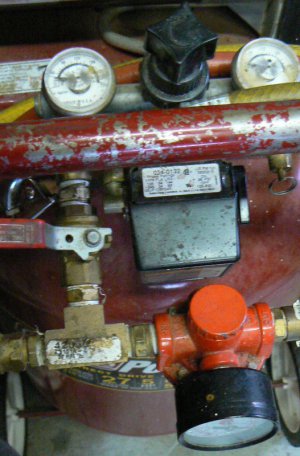- Joined
- Feb 5, 2015
- Messages
- 662
There are two points before I start this short post:
Peening is a useful technique for a couple of reasons besides removing rust.

It's a formidable looking tool and it works great ! In one situation, I used it to remove the rust from a neglected utility trailer before painting in just three hours.
When I decided that I needed to make some welded parts look like they were cast, I made a slight modification to the scaler. I put some coarse sand and small pebbles in a coffee can and operated the needle scaler against this mixture for about five minutes. The needles acquired a rounded surface, removing the sharp edges.
This is a small clamp, three machined parts welded together, "treated" by the needle scaler. The part is small, about one inch by four inches.

- I wasn't sure which sub-forum to post this.
- Why would anyone want to do this ?
- There are a few reasons and anyone interested in this process will have their own.
- I can't count
Peening is a useful technique for a couple of reasons besides removing rust.
- Provides a bit of surface hardening and toughness (similar to forging)
- Great for removing welding flux and scale
- Can produce the appearance of a cast surface on the peened part

It's a formidable looking tool and it works great ! In one situation, I used it to remove the rust from a neglected utility trailer before painting in just three hours.
When I decided that I needed to make some welded parts look like they were cast, I made a slight modification to the scaler. I put some coarse sand and small pebbles in a coffee can and operated the needle scaler against this mixture for about five minutes. The needles acquired a rounded surface, removing the sharp edges.
This is a small clamp, three machined parts welded together, "treated" by the needle scaler. The part is small, about one inch by four inches.

Last edited:

